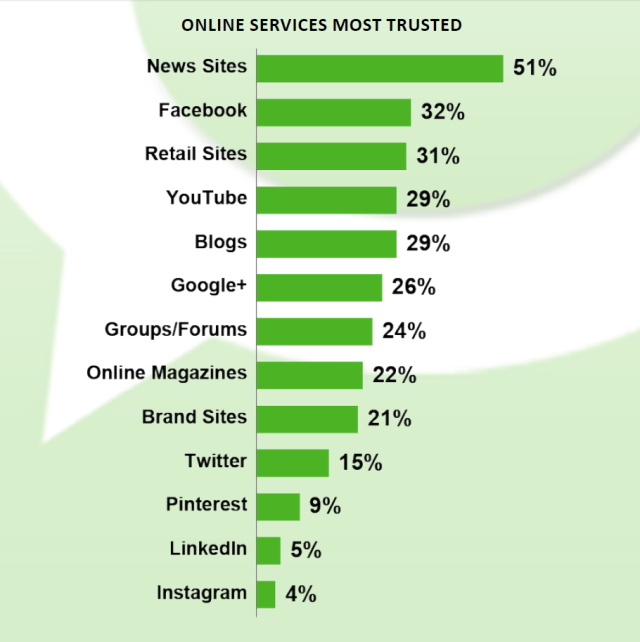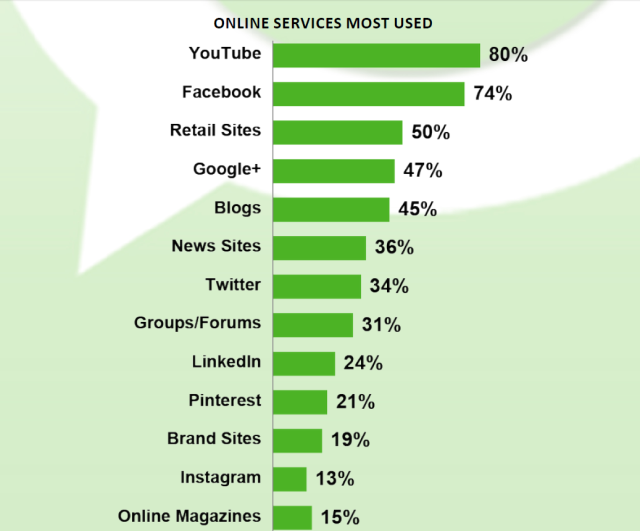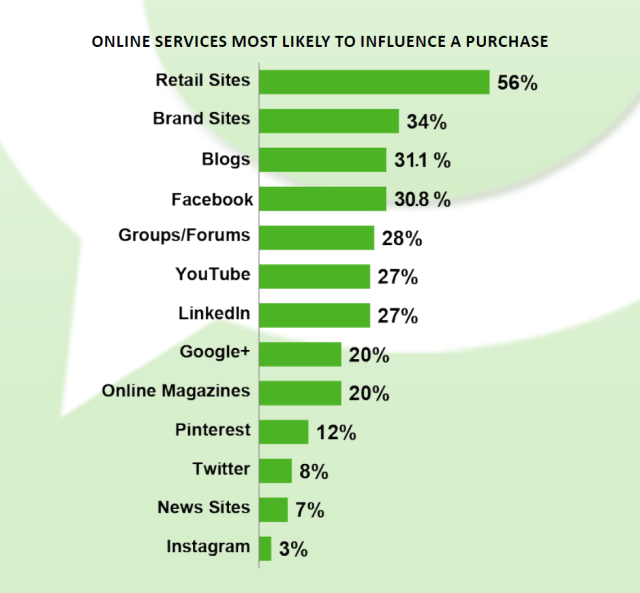Just face it; your title and rank is not important anymore, what matters is your social influence. Or how much impact you have on your friends and followers in the social media. PR– and marketing companies are increasingly targeting individual bloggers, ignoring the big media. In both business and politics methods are being developed to identify the persons with the greatest influence on people in their area. According to new research, blogs are now the third-most influential digital resource (31%) when making overall purchases, only behind retail sites (56%) and brand sites (34%). In fact, blogs were found to be the fifth-most trustworthy source overall for information on the internet. Yet, no one has so far come up with a useful idea on how to turn “likes” into hard cash.
“The disconnect between brand marketers and influencers is a result of a challenge they both face – a lack of uniform metrics to effectively measure the success of influencers marketing campaigns.”
Technorati Media
Founded over a decade ago, Technorati Media has grown into one of the largest social media ad networks, with an advertising reach of approximately 130 million US unique users/month. Technorati sit in the middle of a remarkable social media nexus, possess a wast amount of data and has a unique perspective on what’s driving the major mega trend of our time. The new report – “2013 Digital Influence Report” – is based on a survey amongst the 6000 most influential persons in the social media world, 1200 consumers and 150 top brands. The funny thing is; in spite of the extremely effective technology, the participants seems to have trouble communicating.
According to brand marketers, social media spending will increase substantially in 2013 , but will still not make up for more than 10 percent of the company’s total digital budget.
And that’s quite understandable. They keep counting Facebook-likes, but the money just won’t follow.
The “2013 Digital Influence Report” offers an answer to this long-time mystery – there are other stuff that are more important to the consumers when deciding to make a purchase.
* “The disconnect between brand marketers and influencers is a result of a challenge they both face – a lack of uniform metrics to effectively measure the success of influencers marketing campaigns. At present, brands primarily look to comScore/Nielsen ranking for identifying and selecting influencers first, yet influencers are not well represented in these indices.”
* “Furthermore, when gauging the success of campaigns, where influencers are monitoring traffic/page views, brand marketers are measuring Facebook likes.”
Additionally, the report shows that the so-called influencers has the greatest impact amongst consumer, the smaller area they operate in. You won’t find these people by looking at the number of Facebook-likes. And consumers don’t necessarily use the same media for seeking information on product, as they do for deciding to by it.
The survey findings also indicate that many of those consumers are turning to blogs when looking to make a purchase. Blogs were found to be the third-most influential digital resource (31%) when making overall purchases, only behind retail sites (56%) and brand sites (34%).
.
While YouTube, Facebook and Google+ are the most popular social properties for consumers, bloggers now rank as the fifth-most trustworthy source, overall, for information on the internet.

The news sites still most trustworthy. What is a bit disturbing is that Facebook is second. And it’s rather interesting to see the professionals network, LinkedIn, at the bottom end of this list
.
But here’s the list that really matters if you’re a marketer or an advertiser:
.
But blogging is still a non-profit activity, for most of them, the report points out
That may change in near future.
SUMMARY:
- Facebook and Twitter are the most popular social platforms for bloggers, which are the platforms that generate the majority of blog referrals and shares, as well as those from which bloggers are generating revenue.
- For consumers, YouTube, Facebook and Google+ are the most popular platforms.
- As for brands, 90 percent have a presence on Facebook, closely followed by Twitter and YouTube, but Google+ was not as popular a platform.
Download a copy of “2013 Digital Influence Report” here.
Related by econoTwist’s:
- World Soon To Be Run by Powerful Networks, US Intelligence
- WikiLeaks to Release Over a Million New Docs in 2013
- Google Removes More Than 350.000 Websites Every Day
- Furious Ferrari Crash Car Enthusiasts Website
- You Can’t Always Think What You Want
- The Grand Theory of Christmas, Shopping and Down-Payment
- Financial Times Deutschland: Death by PR
Other related articles:
- Brand Marketers Totally Miss Social Media Influencers – ReadWrite (readwrite.com)
- Building Digital Influence for your Brand (solomozone.com)
- Spending on social is up, but is it going to the right place? (technorati.com)
- Can Facebook Break Our Google Habit? (embargozone.com)
- Brand Marketing Spend still Not Aligned with Digital Influence (geobrava.wordpress.com)
.
All Human Rights Reserved (h) 2013


